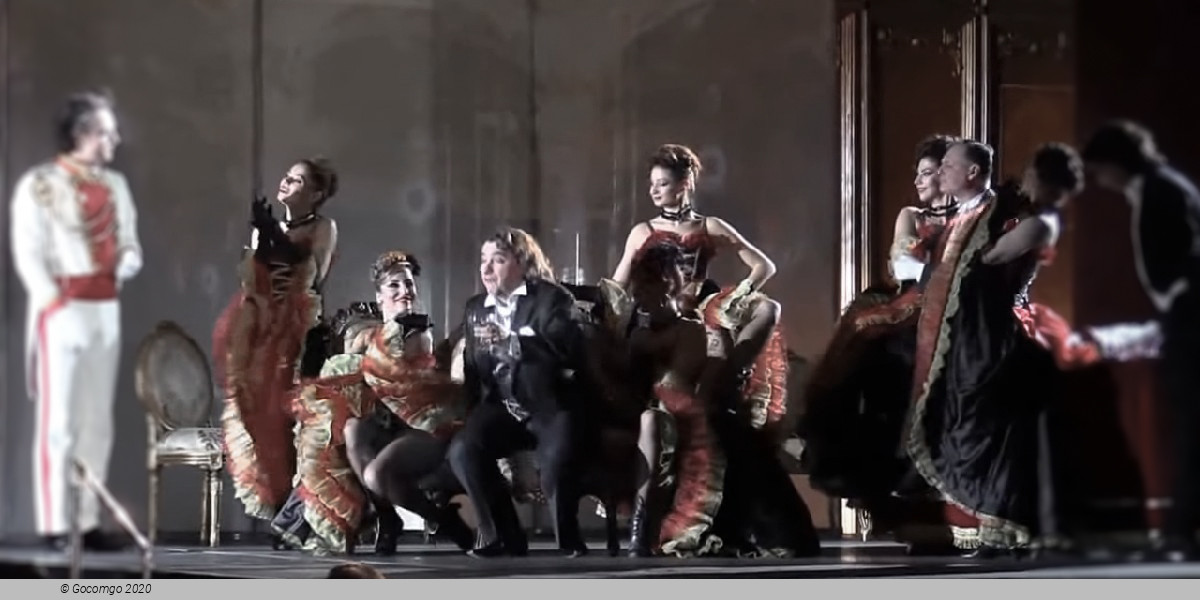National Theater and Musical Ion Dacian (Bucharest, Romania)
National Theater and Musical Ion Dacian

The New Performance Hall of the National Theatre of the Operetta and Musical “Ion Dacian” from Bucharest”. The building is a modern one, the proposed concept framing this space both in the built site of the area and in the trend of contemporary architecture practiced in Europe, and includes several spaces dedicated to artistic activities.
After the successes at the Alhambra, the Operetta genre received support from the Army Theatre, which, at the music section of Uranus Street, offered Operetta performances. In 1950, The State Theatre of Operetta was founded, which was inaugurated with the premiere of “Wind of Freedom” by Isaak Dunaevski, a show to which artists such as Silly Popescu, Maria Wauvrina, Nae Roman, Migry Avram Nicolau, Toni Buiacici, Tiberiu Simionescu, N. Ionescu Dodo and many others contributed.
Reference works would also contribute to increasing the artistic quality of theatre productions, as were those that made up the institution’s repertoire during the period when he was in charge of one of the most important tenors of Operetta – Ion Dacian – , whose name has been, since 1992, in the title of the theatre: “The Land of Smiles” by Franz Lehár (1965); “The Secret of Marco Polo” by Francis Lopez (1966); “Viennese Blood” by Johann Strauss (1967), “Countess Maritza” by Emmerich Kálmán (1967) etc.
Until 1986, when it was demolished along with many other buildings in the Historic Centre of the Capital, the host of the Operetta was the building of the “Regina Maria” Theatre. Then, the Bucharest Institution received its spectators in the Small Hall of the National Theatre. From that moment, but especially after 1989, the institution went through a period of searching, trying, adapting to new conditions.
Under the direction of Sorana Coroama Stanca, an attempt was made, for example, to modernize the repertoire, setting up political cabaret (“Plaisir d’amour”) and performing concerts such as “Stabat Mater” by Rossini or a “Mozart Concert”. A new breath was brought to Operetta between 1994 and 1999, when the institution was led by tenor Dorin Teodorescu.
In 2001, the Operetta Theatre would receive, by Government Decision, the title of The National Theatre, the season being marked by the Premiere of “Miss Virtute (Suzana)”, by Jean Gilbert, directed by Constanța Câmpeanu. In 2005, due to a fire that devastated much of the performance places, the Theatre was forced to carry out its activity in other places, not necessarily suitable for the musical performance.
In 2006, the management of the Theatre was taken over by Răzvan Ioan Dincă, and the institution entered an ample process of renewal both at artistic level, as well as at technical and administrative level. Premiere such as the ballet “Red and Black”, after the novel of the same name by Stendhal, directed by Alexei Mezincescu and choreographed by Adina Cezar, the musical “Broadway-Bucharest”, which acquainted the audience with some of the most famous Broadway productions (”Cats”, “Chicago”, “Cabaret”, “Evita”, “The Phantom of the Opera” or “West Side Story”) – are the first shows that marked the renewal trend of the theatre.
In this context, there have been significant changes in the repertoire, which today includes some of the most famous Operettas, but also some Musical titles. One of the important moments took place in 2009, when the Theatre staged the first musical made by a professional institution of its genre in Romania: the musical “Romeo and Juliet” by Gérard Presgurvic. In 2011, the Theatre staged another successful musical – “Rebecca” by Michael Kunze and Sylvester Levay. In 2015, another musical premiered, “The Phantom of the Opera”, inspired by Gaston Leroux’s novel, based on the music of Andrew Lloyd Weber.
The current Manager – General Manager, soprano Bianca Ionescu-Ballo, aims to attract new categories of audience (especially young audiences) and outline a new image of the Operetta, which combines its rich tradition with future projects, designed to transform the Theatre into an important cultural centre of the Capital.
In 2011, the National Theatre entered a rehabilitation process, which determined the temporary development of the Operetta activity within a large national tour, in the main cities of the country. In parallel, because an urgent relocation of the theatre activity was necessary, the construction of the first headquarters dedicated exclusively to the Operetta and Musical Theatre began, which is, at the same time, the first building for musical performances built in Romania after 1989.


